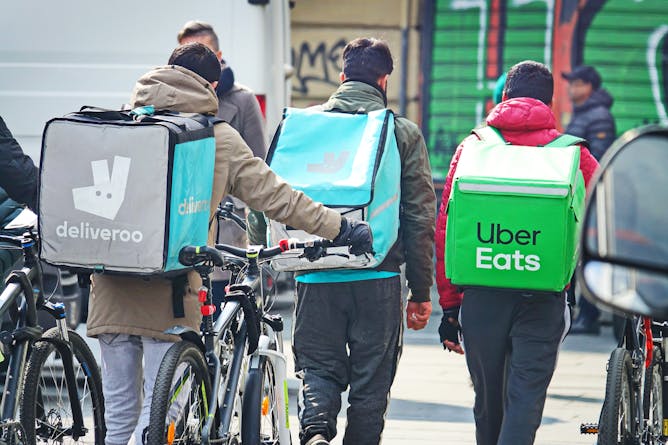|
In a classic example of the cost-of-living crisis, we got a message this week from one of our newsletter subscribers in the U.S. She is a driver for several of the big takeaway delivery apps and has just been told they are no longer going to reimburse her for filling her tank with gas. In the rural area where she delivers, the long journey times are such that she has to fill her tank after every couple of customers. In the future, she’s not sure if these deliveries are even going to be worth her while.
This speaks to a much wider problem for workers employed by companies like Uber, Just Eat and DoorDash, but also for the underlying business models. For years these companies have undercharged customers and subsidized workers in the name of growing as quickly as possible – racking up hefty losses in the process. But now that the era of easy money has come to an end, investors are no longer being so tolerant.
John Colley of the University of Warwick in the U.K. explains that this is threatening to create a vicious circle that could bring the gig economy to its knees. This is why the companies’ stock prices are down so much that they are making even the Nasdaq look buoyant.
|

John Colley, Warwick Business School, University of Warwick
With customers and workers both being squeezed, what does the future look like?
|
|
|
Trade
|
-
Flavio Macau, Edith Cowan University
The impacts of Russia’s invasion of Ukraine will pass, but the impacts of climate change will not.
|
|
Economy
|
-
Johannes P S Sheefeni, University of the Western Cape
Structural reforms to South Africa’s economy need to be accelerated.
-
Peter Martin, Crawford School of Public Policy, Australian National University
If financial markets are to be believed, you’ll be paying $1,000 a month more on a $500,000 mortgage by the end of next year. But I don’t think interest rates will go that high – here’s why.
-
Stephen Onyeiwu, Allegheny College
It is hard to fathom how Nigeria’s Central Bank interest rate increase would benefit most Nigerians.
|
|
Technology
|
-
Amlan Ganguly, Rochester Institute of Technology; Nalini Venkatasubramanian, University of California, Irvine
A digital twin is to a computer model as live video is to a still photo. These virtual replicas can be used to understand and make predictions about a wide range of complex systems, including people.
|
|